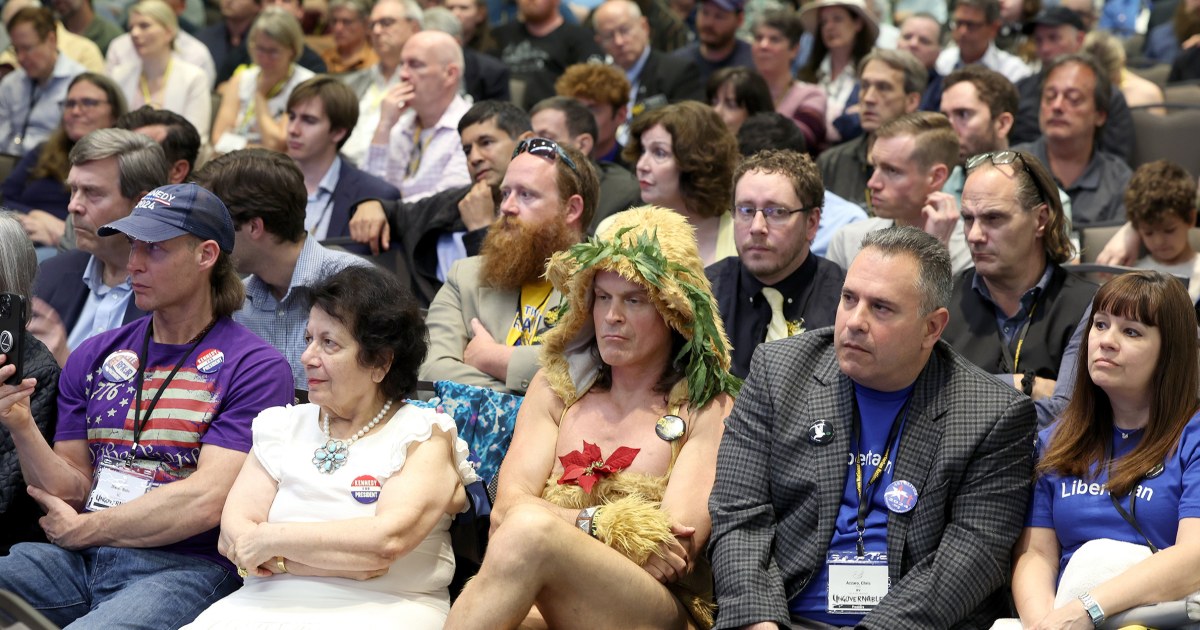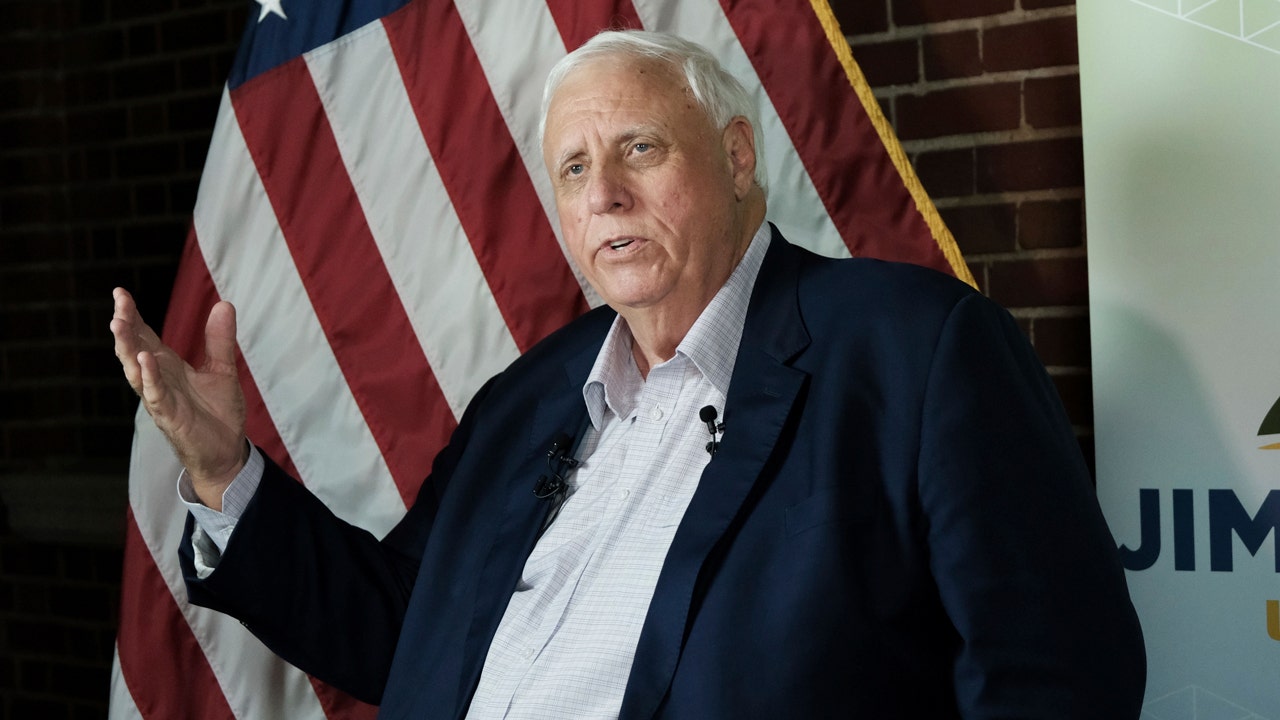OFFICIAL! We are beyond excited to welcome the #1 ranked prospect in the world, AJ Dybantsa, to the Utah Prep family! pic.twitter.com/8g0kCfH9IG
— Utah Prep Boys Basketball (@UtahPrepMBB) May 24, 2024
Utah
Look what Utah ingenuity — and a desire to get out of work — has wrought
Matt Aposhian, COO of FireFly Automatix, is conducting a tour of the company’s warehouse in the industrialized part of the valley. In addition to showing off the impressive lineup of Firefly’s automated sod harvesters and driverless lawnmowers, he’s also pointing out the tens of thousands of parts that are fabricated, molded, welded, shaped, cut, bolted and painted right here on the premises to put the machines together.
When FireFly says its products are made in Utah, it means made in Utah.
“Steel and electronics come in one door,” says Matt, “fully functioning machines go out the other side.”
All of it a testament to the unlimited ingenuity of the human mind.
That and the age-old desire to get out of work.
“Our engineers joke around,” Matt says. “They say they’re inherently lazy so they think of ways to do things easier.”
Then he adds, “It would’ve been nice to have all this around when I was a kid.”
* * *
When the Aposhian kids — Matt’s three brothers and two sisters — were growing up, their father, Lawrence, ran a sod farm. Besides putting a roof over their heads and food on the table, the farm made sure the siblings were no strangers to manual labor. When the cut sod rolled off the conveyor belt, they were the ones who got to get down on their hands and knees to lift it and stack it.
“Those weren’t what I’d call the fun days,” says Matt, “but our parents were honorable people who taught us to work hard. They instilled that work ethic and an entrepreneurial spirit in us from a very young age. I think that has a lot to do with what’s happened.”
What’s happened is the invention and production of sod harvesters and lawnmowers that have taken the robotic age by storm.
The company’s automated harvesters — capable of turning what used to be a four-man operation into one driver sitting in a heated or air-conditioned cab listening to Spotify — can be found all over the U.S. and around the world, including as far away as China and South Africa.
And its eagerly anticipated, just-released fully electric robotic lawnmowers — requiring no driver — have already been ordered by sod farms and golf courses.
It all goes back to the day about 16 years ago when Steve Aposhian, Matt’s older brother, decided he could make a better robotic arm than the one that kept breaking on the early self-stacking harvester Lawrence had bought for his sod farm.
Steve is the family engineer. When Steve was a teenager, Matt remembers him rigging up a motor from an electric race car to the blinds in his bedroom so he didn’t have to get out of bed to open and close the blinds.
Steve recruited a friend and fellow engineer, Will Decker, to redesign the robotic arm that kept breaking. When their version proved unbreakable, they decided to see if other sod farms might like to purchase something that was better than the original equipment.
When the response was “yes,” Steve and Will, along with another engineer friend, Eric Aston, and Matt Aposhian and his younger brother Dan formed a company they called FireFly. They set up their headquarters on Lawrence’s farm.
Then they set their sights even higher.
Lawrence Aposhian remembers the initial exchange he had with his son Steve.
“He said, ‘I want to build an entire harvester from the ground up.’ I said, ‘Well, go ahead.’ So he got his engineer buddies, they sat in my office, got on my computer, and started designing this sod harvester. At night they went into my shop, got the steel and started fabricating.”
Steve, Will and Eric recruited Sam Drake, the professor who taught them engineering at the University of Utah, to help.
In less than a year — quick work even by Elon Musk standards — they had created what Lawrence calls “this remarkable thing.”
Horizon Turf Farms, a huge sod operation in Texas, bought the first FireFly harvester; then bought 17 more.
FireFly moved out of Lawrence’s farm into a spacious warehouse and in the 12 years since, as the company has grown to 190 employees (including 30 engineers), more than 600 fully completed FireFly ProSlab harvesters have rolled out the door. Currently, the company is selling about 110 harvesters a year.
The success of the harvesters led to the six years of thinking, tinkering and fabricating that produced the just-released AMP — Autonomous Mowing Platform.
That’s a fancy way of saying a lawnmower that mows by itself.
“There’s nothing like it in the world,” says Matt. “With it being fully electric and fully autonomous, it does some things nobody else can do right now.”
Not only is a driverless 100-inch wide mower attractive to sod farms — where grass is cut as often as three times a week — but also to other places with large expanses of grass such as golf courses — a market Matt sees as the AMP’s future. There are 38,000 golf courses in the world, he points out. With a lawnmower that needs no driver, no gas and makes no noise, golf courses can mow their lawns early and late, not pollute the air and not wake anyone up. (You can see a video of the AMP in action at fireflyautomatix.com/amp-mowers/.)
* * *
As Matt concludes our warehouse tour, making sure photographer Laura Seitz hasn’t taken any photos that might give away intellectual property (FireFly is home to more than six dozen current and pending patents), he surveys an assembly line Henry Ford would be proud of and an engineering laboratory right out of Thomas Edison’s playbook.
Hearkening back to his boyhood, he sums up in a sentence what the Aposhians and their engineer friends have wrought.
“We took what were the worst jobs on the sod farm,” he says, “now they’re the best.”

Utah
Utah youth gathers to honor fallen veterans this Memorial Day

SANDY, Utah — With the power of over 200 youth volunteers, thousands of veterans’ graves have a flag planted in their honor this Memorial Day.
From all over the Salt Lake Valley students of all ages gathered at around 7 p.m. Thursday at Larkin Sunset Gardens Cemetery in Sandy.
“Some of them are local church groups. This group right behind me here is my grandson’s swim team,” said Rob Larkin the mortuary manager and a fourth-generation in the family business. “And then, there’s some other civic high school groups that come in and help.”
Larkin gets to see the next generation respect and honor our fallen Utah heroes.
“(My grandson went) over and cleaned up the grave and made sure that his great-grandfather had a flag. He served in the Korean War,” Larkin said.
Larkin manages this event each year and sees the lessons the volunteers learn from the experience.
“It gives them … their first inkling on how important it is to be respectful to our veterans,” he said.
A red white and blue tribute for our fallen heroes ahead of Memorial Day. By the time the sun set, every American flag had a home.
Eric Cabrera is a reporter for KSL NewsRadio. You can follow him on Instagram.
Keep reading
Utah
The top basketball prospect in 2025 will spend a year playing in Utah

The No. 1 overall high school basketball prospect in America is going to call Utah home for a season. Specifically, Hurricane.
On Friday, it was announced that AJ Dybantsa — the consensus top recruit in the 2025 class — is transferring high schools, moving from Prolific Prep in California to Utah Prep Academy.
Listed at either 6-foot-8 or 6-foot-9, depending on the outlet, and 200 pounds, Dybantsa is one of the most sought after prospects in the country, holding scholarship offers from over 20 notable Division 1 programs, the most recent offer coming from the University of Utah.
Duke, Kansas and Kentucky have all offered Dybantsa, as have the two-time defending champion UConn Huskies, plus North Carolina, Texas, Washington and more.
The Brockton, Massachusetts, native averaged averaged 21.2 points, 9.4 rebounds and 3.5 assists per game as a junior at Prolific Prep this past season and as a freshman two years ago at St. Sebastian’s School in Needham, Massachusetts, Dybantsa was named the Gatorade Player of the Year.
Through 10 games played with the Oakland Soldiers (9-1) this season on Nike’s EYBL circuit, Dybantsa is averaging 23 points, 5.5 rebounds and 1.9 assists per contest while shooting 54.8% from the field, 39.3% from 3-point range and 81.6% from the free-throw line.
Dybantsa reclassified up to the Class of 2025 in October and is now considered the consensus top prospect for the 2026 NBA draft as a small forward.
Utah Prep, formerly known as RSL Academy, is relocating to Hurricane from Herriman for the 2024-25 season. The Academy is just one of a couple notable prep basketball powerhouses now located in the state, along with Wasatch Academy in Mt. Pleasant.
Another top 10 prospect in the 2025 class — Isiah Harwell — plays for the Tigers, meaning Utah will be the temporary home of two of the most talented prep basketball players in the country. A Pocatello, Idaho, native, Harwell holds scholarship offers from nearly a dozen Division 1 programs currently, including Gonzaga, Houston, North Carolina and UCLA.
Utah
Could EPA air quality standards be Utah’s first test of its new sovereignty law?

Top Utah officials aren’t happy with federal air quality standards. And their ammunition to fight back could jeopardize the state’s federal highway funding or even the federal government overriding how the state handles air quality to begin with.
In February, Gov. Spencer Cox called the stricter regulations imposed by the Environmental Protection Agency “onerous” and “so stringent” that it will be “impossible” for the state to comply. The EPA reduced the amount of PM2.5 and ozone pollution allowed in the atmosphere, making it harder to fall within the attainment standards, which Utah hasn’t met since 2006. The Utah Attorney General’s Office has filed and joined other states in challenging the agency over its mandates, like the “Good Neighbor Rule,” which targets ozone pollution emitted across state lines.
The majority of the Utah Legislature is so unhappy with the regulations it partly inspired a new state law that aims to push back. Republican Sen. Scott Sandall’s 2024 “Utah Constitutional Sovereignty Act” sets up a process for the state to opt out of federal regulations they deem as overreach.
The first test of the new statute could be the looming air quality battle the state is picking over the updated air quality standards and the Clean Air Act. But it won’t be an easy sell.
“If the state wants to test the red line,” said Brigham Daniels, a law professor at the University of Utah, “this is a risky one.”
During a May 15 Natural Resources, Agriculture, and Environment Interim Committee meeting, Bryce Bird, the director of the Utah Division of Air Quality, said Utah is “still really struggling” to meet EPA ozone standards, especially in Salt Lake, Davis and parts of Weber and Tooele counties. But if the state doesn’t fall within the attainment zone of 70 parts per million, which is considered protective of public health, Utah could face federal funding sanctions.
“That prevents both federal funds being used to expand transportation projects here in that non-attainment area, but it also prohibits state funding from being used for regionally significant projects,” Bird said. “So it really does have that direct impact on the fastest growing metropolitan area in the country.”
If Utah still doesn’t clean up the air after funding is frozen, Bird said the federal government could swoop in and create its own plan for how Utah will meet ozone standards. If that comes to pass, the state “will lose flexibility and input into the plan.”
Utah and the Intermountain West face an uphill battle when it comes to meeting EPA ozone standards. Bird said states like Arizona, Utah and Colorado have “higher natural concentrations of ozone and a greater impact from international transport of the precursor emissions to ozone formation,” which places some of the problem outside of the state’s control.
The fact that Utah isn’t solely responsible for ozone pollution within its boundaries is Sandall’s biggest complaint, calling it “the heart of the heartburn,” and that Utah doesn’t have to “try to comply to an uncontrollable standard.”
“That’s the message that we’ve got to send to the federal government is we can’t do that. There’s no way,” he said during the May 15 meeting. “So whether we do that through legislation, whether we do that through a lawsuit, whatever we do, we have to be the ones to say no.”
Republican Rep. Casey Snider followed Sandall’s comments by stating “perhaps there needs to be a fundamental shift in the key objectives” of the Utah Division of Air Quality centered around “pushing back on this overzealous nature of the federal government rather than simply complying with the impossible.”
Daniels said he’s sympathetic to the predicament the state is in because of what the EPA considers to be “a healthy air quality will be very difficult for the state to obtain,” given the outside exacerbating factors. But challenging the Clean Air Act isn’t that simple.
From his perspective, if Utah does take the steps to challenge the Clean Air Act under the Utah Constitutional Sovereignty Act, the state is likely to fail because of the Supremacy Clause, which says the Constitution and federal statutes are “the supreme law of the land,” trumping any state laws.
Daniels added EPA employees are mandated by federal law to enforce the consequences of a state not complying with standards set by the Clean Air Act and a state sovereignty clause won’t stop them from doing so either.
“Within the realm of environmental law and natural resources law, you almost couldn’t have chosen a worse statute to gamble with,” Daniels said. “Because the federal government doesn’t have any discretion about whether or not it moves forward with sanctions.”
-

 Politics1 week ago
Politics1 week agoVulnerable Dem incumbents move to the center in key swing states as Biden panders to far-left base
-

 World1 week ago
World1 week ago‘Monstrous crime’: World reacts to attack on Slovakia’s prime minister
-

 News1 week ago
News1 week agoHow a migrant aid group got caught up in a right-wing social media thread : Consider This from NPR
-

 Politics1 week ago
Politics1 week agoSouthern border migrant encounters decrease slightly but gotaways still surge under Biden
-

 World1 week ago
World1 week agoSlovakia PM Robert Fico in ‘very serious’ condition after being shot
-

 Movie Reviews1 week ago
Movie Reviews1 week agoIs Coppola’s $120M ‘Megalopolis’ ‘bafflingly shallow’ or ‘remarkably sincere’? Critics can’t tell
-

 Movie Reviews1 week ago
Movie Reviews1 week agoGuruvayoor Ambalanadayil movie review: This Prithviraj Sukumaran, Basil Joseph-starrer is a total laugh riot
-

 World1 week ago
World1 week agoTaiwan grapples with divisive history as new president prepares for power















